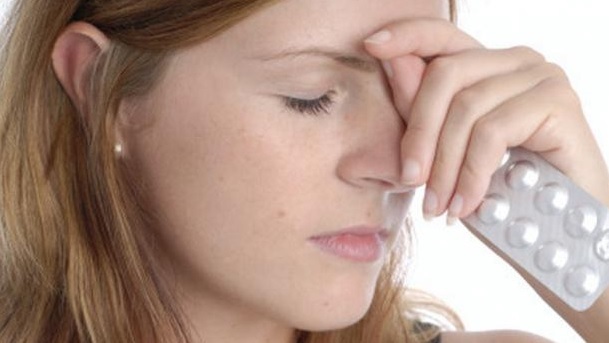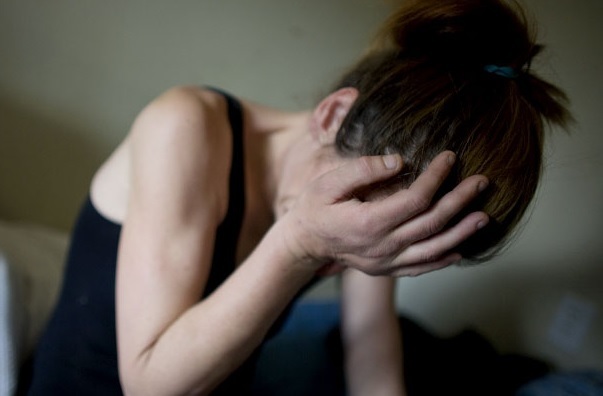Obsessive-compulsive disorder: signs, diagnosis and therapy
Contents:
- Presumptive disease factors
- Features of clinical manifestations
- Methods of diagnosis and therapy
- Help
 The syndrome of obsessive-compulsive disorder belongs to mental pathologies called obsessive-compulsive disorder. The patient has stereotyped repetitive thoughts that "force" several times or dozens of times to perform a certain action( folding things, rechecking an iron or a closed door lock, washing hands).
The syndrome of obsessive-compulsive disorder belongs to mental pathologies called obsessive-compulsive disorder. The patient has stereotyped repetitive thoughts that "force" several times or dozens of times to perform a certain action( folding things, rechecking an iron or a closed door lock, washing hands).
Thoughts have a persistent nature, accompanied by anxiety and a sense of fear about the safety of their own health or loved ones. Multiple activity does not bring the patient joy, but only aggravate depression. Consider the causes and signs of the disease, and how to treat obsessive-compulsive disorder?
Presumed factors of the disease
There are theoretical reasons for obsessive-compulsive disorder, the most common of which include:
- hereditary predisposition - the presence of disease in close relatives increases the likelihood of the disease in children;
- complicated course of childbirth, craniocerebral trauma;
- features of the functioning of the nervous system in the transmission of impulses between neurons or inadequate metabolism of mediators( serotonin and others);
- disorders of the autonomic nervous system;
- Inflammatory and infectious brain lesions with complications;
- psychologically destructive family environment;
- education in strict "framework";
- chronic stress at work and at home;
- persistent anxiety and phobia based on a real threat to health or life.
Patient uses controlled acts to reduce overwhelming fear, but relief is short-lived.
Features of the clinical manifestations of
Symptoms of obsessive-compulsive disorder are observed in patients, respectively, in the form of the disease course:
- Exceptionally emotional obsessivnoe disorder - the patient complains of constant thoughts, doubts, fears, bright images of a negative nature that "pursue" him. Most often they have a perverse sexual nature, fear of becoming infected with various viral or bacterial infections, threats of violence, physical violence or death, fear of losing money and valuables, fear of disgrace, blasphemous thoughts and others.
- Separate compulsive disorders - the patient develops stereotyped rituals, but they were formed without fears. These include recounting stairs, cars of some color or brand, folding books in a certain order, reusable checking of switches, cranes, door lock, constant washing of hands and cleaning in the house, and others.
- The combination of obsessive and compulsive disorders is revealed in the form of certain "rituals" in response to phobias and fears. The patient's condition is aggravated in places of congestion, because the threat of contact with "dirty" clothing increases or "get" microbes when the surrounding people cough and sneeze. They try not to visit crowded places, wear long protective clothing, and when they come home they immediately wash it.
- Obsessive-compulsive personality disorder is referred to as a particular form of the disease. For her, uncharacteristic persistent "rituals", however, patients tend to perfectionism and total control over their own lives and the affairs of their loved ones. They have a set of own rules, they fulfill them and expect the same from others. In the emotional state of patients, anxiety, regret, and disappointment prevail. They prefer to punish themselves and others, considering frivolous.
- Obsessive-compulsive disorder in children occurs to a lesser extent and manifests itself mainly in adolescence. Older children have a fear of being lost or "forgotten" in an unfamiliar place, so they do not let go of the adult's hand. Also there are phobias to lose school supplies, to be ridiculed or sent to an orphanage and others resembling violations in adults( frequent washing of the body, hands, recount of books or an account in order to avoid a catastrophe with loved ones).

Important! The disease occurs in hypochondriac persons, accompanied by disturbances in sleep, appetite( from anorexia to bulimia), difficulties in intellectual, physical work.
Methods of diagnosis and therapy
For the recognition and determination of obsessive-compulsive disorder, the psychological test plays a significant role. It consists of a list of issues( about 30-35), including the main areas of violations:
- The unit includes a section - cleanliness of hands, body( taking a bath or shower), facial, hair, cleaning clothes, shoes, cleaning an apartment or folding things, Washing dishes, washing clothes, taking out the garbage.
- Block - visiting the toilet, dressing, putting off clothes, touching your body and other people, sexual relations, touching pens or objects in public places.
- Block - the implementation of calculations, the performance of functional duties, the completion of documents, forms, writing letters.
Each question contains several options for answers - it does not cause difficulties;Requires twice as much time or try to avoid;I spend three times more time than other people. The use of such tests helps with the diagnosis.
Help
Treatment of obsessive-compulsive syndrome includes psychotherapy using the "stop thinking" technique, drug therapy( SSRI, antidepressants).Apply means of traditional medicine - valerian, lemon balm, motherwort. Also important is the support of relatives and self-control over fear.
write the question in the form below:



